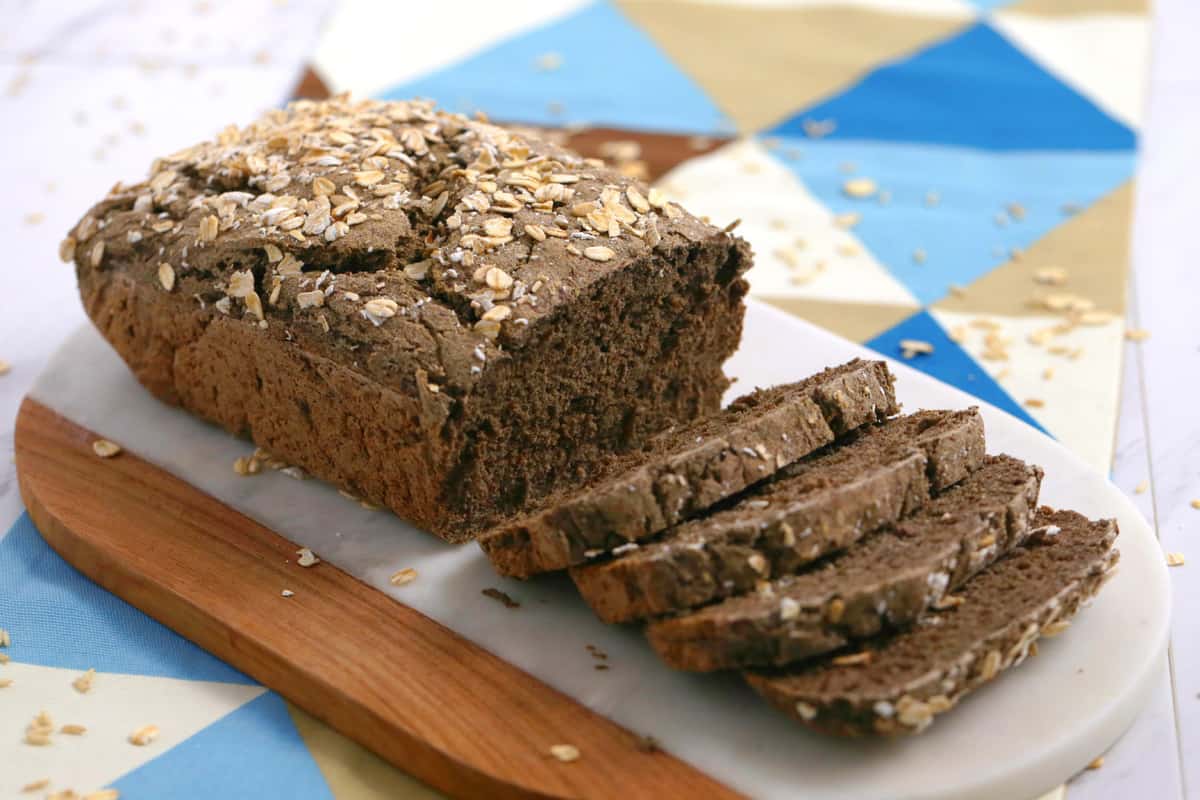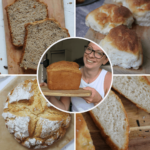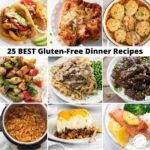Craving delicious bread without the gluten or dairy? You’re not alone! Millions are embracing vegan and gluten-free lifestyles, but finding satisfying bread can feel like a quest. This journey into the world of vegan and gluten-free baking unveils the secrets to crafting loaves that are both incredibly flavorful and surprisingly light. We’ll explore the unique properties of gluten-free flours, tackle common baking challenges, and guide you through simple yet elegant recipes that will transform your kitchen into a bread-baking haven.
From a basic, foolproof loaf to exciting variations like savory herb bread and subtly sweet delights, we’ll cover a range of recipes to suit every palate. Learn how to master techniques like achieving a perfect rise, understanding the role of binding agents, and even creating visually stunning loaves. Prepare to be amazed by the textures and aromas that await – a crispy crust giving way to a soft, airy interior, bursting with the flavors you love.
Introduction to Vegan and Gluten-Free Baking
The rising popularity of vegan and gluten-free diets has created a significant demand for delicious and satisfying alternatives to traditional baked goods. Many individuals embrace these dietary choices for ethical, health, or allergy-related reasons, but finding truly enjoyable vegan and gluten-free bread can often feel like searching for a needle in a haystack. The challenge lies not only in replicating the familiar texture and taste of wheat bread but also in understanding the unique properties of gluten-free flours and how they behave during the baking process. This exploration into vegan and gluten-free bread recipes aims to empower you with the knowledge and recipes to bake delectable loaves at home.
Gluten-free flours, unlike wheat flour, lack gluten, the protein responsible for the elasticity and structure in traditional bread. This absence necessitates a different approach to baking. Common gluten-free flours like almond flour, coconut flour, rice flour, and tapioca starch each possess unique characteristics affecting the final product. Almond flour, for example, contributes a naturally sweet and slightly nutty flavor but can result in a denser bread if not balanced with other ingredients. Coconut flour, on the other hand, is highly absorbent and requires careful hydration to prevent a dry, crumbly texture. Understanding these nuances is key to successful gluten-free baking. The recipes presented here will focus on balancing different flours to achieve optimal texture and flavor.
Vegan Gluten-Free Bread Recipe Variations
This collection features a variety of vegan and gluten-free bread recipes designed to showcase the versatility of gluten-free baking. We’ll explore recipes ranging from simple, quick breads perfect for a weeknight treat, to more complex sourdough-style loaves requiring a longer fermentation process. Each recipe will provide detailed instructions and tips to help you achieve the best results, regardless of your baking experience. We’ll also delve into techniques for achieving a light and airy crumb structure, a common challenge in gluten-free baking, and offer suggestions for creative flavor combinations and additions. Recipes will include options for those who prefer a sweeter bread and those who prefer a more savory option. Expect a delightful journey through the world of vegan and gluten-free baking, resulting in delicious and satisfying bread you can enjoy without compromise.
Basic Vegan and Gluten-Free Bread Recipe

This recipe provides a simple, yet satisfying, vegan and gluten-free loaf perfect for beginners. The focus is on achieving a moist and tender crumb, even without the structural support of gluten. Understanding the role of each ingredient is key to success.
This recipe utilizes a blend of gluten-free flours for optimal texture and rise. The xanthan gum acts as a binding agent, mimicking the elasticity of gluten. Flax eggs provide binding and moisture, while apple sauce adds sweetness and moisture. Baking powder provides the necessary lift.
Recipe Ingredients and Instructions
| Ingredients | Quantity | Instructions | Notes |
|---|---|---|---|
| Gluten-Free Flour Blend (brown rice, tapioca, and potato starch blend recommended) | 2 cups | Whisk together dry ingredients in a large bowl. | Using a pre-made blend ensures consistent results. Adjust the blend to your preference. |
| Xanthan Gum | 1 teaspoon | Add to dry ingredients. | Xanthan gum provides binding and elasticity, replacing gluten. |
| Baking Powder | 1 teaspoon | Add to dry ingredients. | Provides lift to the bread. |
| Salt | 1/2 teaspoon | Add to dry ingredients. | Enhances flavor. |
| Flaxseed Meal | 1 tablespoon | Mix with 3 tablespoons of water; let sit for 5 minutes to form a flax egg. | Acts as a binder and adds moisture. |
| Unsweetened Applesauce | 1/2 cup | Add to wet ingredients. | Adds moisture and sweetness. |
| Plant-based Milk (almond or soy recommended) | 1 cup | Add to wet ingredients. | Adds moisture and helps create a soft texture. |
| Olive Oil | 2 tablespoons | Add to wet ingredients. | Adds moisture and richness. |
| Optional: Seeds (sunflower, flax, or chia) | 1/4 cup | Fold into batter. | Adds texture and nutrients. |
Combine wet ingredients in a separate bowl. Gently fold wet ingredients into dry ingredients until just combined. Do not overmix. Pour batter into a greased 9×5 inch loaf pan. Bake at 350°F (175°C) for 50-60 minutes, or until a toothpick inserted into the center comes out clean. Let cool completely before slicing.
Troubleshooting Gluten-Free Bread
Common issues in gluten-free baking stem from the lack of gluten’s binding and elasticity. Understanding these issues and their solutions is crucial for consistent results.
Dense Texture: A dense loaf often indicates insufficient leavening or overmixing. Ensure your baking powder is fresh and that you haven’t overmixed the batter. Overmixing develops gluten-free flour’s structure, leading to a tough result. Slightly underbaking might also be beneficial.
Crumbly Consistency: A crumbly loaf usually points to a lack of moisture. Increase the amount of applesauce or plant-based milk in the recipe. Ensure the flax egg is properly prepared. Using a higher-protein gluten-free flour blend can also improve the crumb structure.
Baking vegan and gluten-free bread might seem daunting at first, but with the right techniques and a dash of patience, the rewards are immeasurable. The journey from flour to finished loaf is a rewarding one, filled with the satisfying aroma of freshly baked bread and the joy of creating something delicious and healthy. We’ve armed you with the knowledge and recipes to embark on this exciting culinary adventure. So, gather your ingredients, preheat your oven, and prepare to be captivated by the magic of homemade, vegan, and gluten-free bread.
Question Bank
Can I substitute one gluten-free flour for another?
While some substitutions are possible, results may vary. Different gluten-free flours have unique properties, affecting texture and rise. It’s best to follow the recipe’s recommendations initially.
How long does vegan and gluten-free bread last?
Properly stored in an airtight container at room temperature, vegan and gluten-free bread generally lasts 3-4 days. Freezing is a great option for longer storage.
Why is my gluten-free bread so dense?
Dense bread can result from insufficient leavening, overmixing, or using too much liquid. Ensure you’re using the correct amount of baking powder or yeast and avoid overmixing the batter.
What is xanthan gum, and why is it used?
Xanthan gum is a food additive that acts as a binding agent in gluten-free baking, helping to improve texture and mimic the elasticity of gluten.


